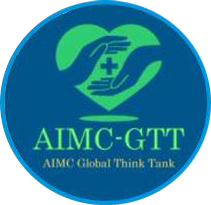Abstract
Background: the vascular endothelial growth factor (VEGF) pathway plays a prominent role in the growth and progression of human cancer, including non-small cell lung carcinoma (NSCLC). The key mediators of VEGF signaling are a family of related receptor tyrosine kinases that include VEGFR1, VEGFR2, and VEGFR3. The relative expression levels, activity, and cross-talk among these receptors may contribute to response of NSCLC to antiangiogenic therapies, and a better systematic, translatable approach to categorizing tumors is needed.
Materials and Methods: We comparatively evaluated immunohistochemical expression of the three VEGFRs in archival primary NSCLC tissues (n=96). Results: VEGFR1 and VEGFR2 were localized both in vessels and tumor cells, while VEGFR3 was only localized in tumor vessels. A set of eight VEGFR staining subclasses were identified: Triple VEGFR positive (n=11, 11.5%), VEGFR1 predominant (n=22, 22.9%), VEGFR2 predominant (n=9, 9.4%), VEGFR3 predominant (n=3, 3.1%), VEGFR1/2 predominant (13, 13.5%), VEGFR1/3 predominant (2, 2.1%), VEGFR2/3 predominant (n=8, 8.3%), and triple VEGFR negative (n=28, 29.2%). An objective categorization based on K-means clustering revealed four clusters, three of which showed high VEGFR2 compared to VEGFR3 (30.7% of cases), cases high in both VEGFR2 and VEGFR3 (18.2%), and cases that were negative/low for both VEGFR2 and VEGFR3 (45.4%). A positive association between VEGFR2 and VEGFR3 was found, however no associations were observed between VEGFR1 and VEGFR2, nor VEGFR1 and VEGFR3.
Conclusion: The proposed subclasses of NSCLC are an approach for complementing lines of investigation of antiangiogenic therapies beginning with systematic characterization of the disease.
The molecular mechanisms of angiogenesis are exploited by numerous human cancer types to stimulate tumor growth and progression (1, 2). These include cancer of the lung, the leading cause of cancer death worldwide (3, 4). In non-small cell lung carcinoma (NSCLC), several anti-angiogenic agents have shown clinical efficacy in various histological subtypes (5-9), however NSCLC continues to be one of the most frequent and aggressive forms of human cancer (10, 11). In order to better understand and to target resistance to antiangiogenic mechanisms, an improvement in reliable characterization of the most appropriate biomolecular factors that govern the complex architecture of angiogenic signaling in NSCLC may be needed (12).
Many factors work in concert to elicit effects on angiogenic processes, but the most prominent factors are vascular endothelial growth factor (VEGF) and its cognate receptor, VEGF receptor 2 (VEGFR2) (2, 13). VEGFR2 belongs to a class of receptor tyrosine kinases exhibiting seven immunoglobulin-like domains in their extracellular regions (type V) and includes family members VEGFR1 and VEGFR3 (14). These receptors are commonly located in the vascular and lymphatic endothelium within tumor stroma and are involved in the differentiation, maintenance, proliferation, and/or
migration of endothelial cells (15, 16). A number of studies have evaluated expression of the VEGFRs with or without
parallel assessment of vascular density and various VEGF ligands in NSCLC tissues (17). These include more focused
analyses of the VEGFA growth factor and its two receptors, VEGFR1 and VEGFR2 (18), as well as profiling of VEGFC and/or VEGFR2 and VEGFR3 in the tumor vasculature (19-22). While individual VEGFRs have been shown to have prognostic relevance (23), systematic analysis of vascular expression of the three VEGFRs using a quantifiable scoring approach has not been uniformly applied in these studies.
Recently, we implemented immunohistochemical (IHC) assays for two members of the VEGFR family following a rigorous development paradigm (24, 25). Here, we developed an IHC for a third VEGFR family member and applied these assays to an independent series of archival primary NSCLC with the following aims: i) characterization of the heterogeneity of IHC-based expression of the three VEGFRs in NSCLC tissues, ii) determination of associations among the prevalence of these three VEGFRs in NSCLC, and iii) identification of prominent subsets of patients with NSCLC based on relative expression of the three VEGFRs. As the relative expression and interaction among these receptors may allow a better understanding of the intricacies of VEGF signaling, we propose this systematic VEGFR protein profiling approach to complement established disease characterization methodologies in NSCLC (26).
